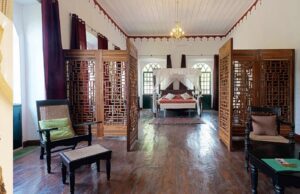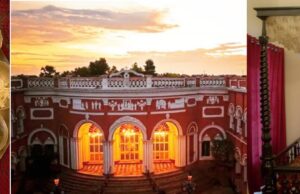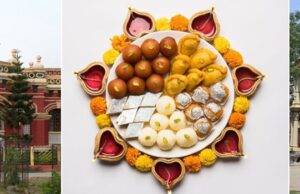
WoT's Hot
Serampore is many centuries old. Its roots can be traced back to the Mughal Era. During the Mughal period, settlements around present-day Serampore, such as Akna (today's Akra Bati Lane) and Mahesh were heavily populated. The hot humid climate of the area suited the textile industry and the local land was well known for its cotton and silk weaving. The Hindu weavers used to manufacture fine cotton pieces, while the Muslim weavers monopolized the manufacture of silk. In the fertile land, paddy, jute and betel were grown in abundance.
Fredriksnagore
The urbanization phase began with the acquisition of land in the area by the Danes in the early 18th century, as part of the Danish colonial empire. In 1755, the Danish East India Company sent a representative from its Tranquebar office to the Nawab of Bengal. By 1770, the Danish merchants were beginning to make significant progress in trade and commerce in the area. Danish prosperity was assisted by the able administrative performance of Colonel Ole Bie, who was appointed the first Crown regent of Serampore in 1776.
The Danes also established a bazaar (the present Tin Bazaar) and allowed private godowns or warehouses to be maintained. Gradually, the town developed and became elegant and prosperous, and merchants of both foreign and indigenous origin began to arrive and live there. The balmy days of Danish overseas trade largely coincided with the service of Ole Bie as Head of the factory, serving from 1776 to 1805, with only a few interruptions. They called it Fredriksnagore. On 11 October 1845, it was sold to Britain, which integrated it into British India and officially restored the Bengali name. After taking possession of the town, the British began to look after its civic amenities and the earlier 'Village Committee' was transformed into the Serampore Municipality in 1865.
 The Serampore Initiative was founded by the National Museum of Denmark in 2008 with the purpose of documenting and preserving the physical cultural heritage from the Danish period in Serampore (1755 to 1845). Furthermore, the Initiative aims at creating new knowledge and awareness of Serampore through research in, and communication of, joint Indo-Danish history.
The Serampore Initiative was founded by the National Museum of Denmark in 2008 with the purpose of documenting and preserving the physical cultural heritage from the Danish period in Serampore (1755 to 1845). Furthermore, the Initiative aims at creating new knowledge and awareness of Serampore through research in, and communication of, joint Indo-Danish history.
INTACH is partnering the Serampore Initiative in this mission by managing the restoration of many of the projects there. The major initiative taken by them was the restoration of the Heritage Core of the town. This includes the following edifices:
- The Governor’s House, which is in the area known as the Court Compound (as the District Courts were located here), is a grand Danish-era building. It is planned to make this a local community center and house a Museum of Danish History of Serampore. The West Bengal Heritage Commission has taken the responsibility of the restoration.
- St Olave’s Church: Olav’s Church (1806) today remains as one of the most significant relics of the time when Serampore was under Danish management and known by the name of Frederiksnagore. The Church has been used by the local congregation ever since. In recent years, however, the building has been kept locked due to the danger of a collapse. Locally, there has been a great wish to reopen the church, but the necessary means have so far been lacking. Consequently, the National Museum’s Serampore Initiative has entered into a collaboration meant to both secure an important part of the Indo-Danish heritage and once again turn the church into a vibrant religious and cultural meeting place for the town’s population. It was recently re-consecrated in the presence of the Bishop of Calcutta and other dignitaries.
- The South Gate: It dates from around 1800 and has been utilized as a guard house and detention area. Danish sources refer to it as the “back gate”, and in the British period it was known by the Indian word “tannah”, meaning a guard house. When the railway was constructed in Serampore in 1854, the trade route moved from the river to the land, probably resulting in the “back gate” changing its function to the main gate for the British. It is not known when the building fell out of use, but it has been lying in obscurity for many years and the back passage into the compound now goes over the collapsed wall.
- The Main Gate: As the name suggests, this was the main entrance to the Danish Administrative center. It was a magnificent entrance to the compound which over the years lost its sheen. It is being restored as part of the initiative
- Denmark Tavern and Hotel: Indeed one of the most exciting restoration projects taken up by the initiative, it will try and recreate a bygone era. Located on the banks of the River Hooghly on NIshan Ghat, this building, as the name suggests was used as a hotel for seafarers and visitors to the town. It is proposed to create a Coffee shop and a few rooms for visitors.
- Red Building: Though not strictly from the Danish era, this building is being restored as part of the initiative. It is an annex to the Governor’s house and was built by the British who used it for official purposes.
- Landscaping of the Court Compound.
- Regeneration of the Heritage Core
Other Articles in WANNAGO WOT
What to read next
Featured articles

Welcome Festive Season in Glam, Latin Quarters Launches new #PujoBling Collection with Monami Ghosh
by WOT












































